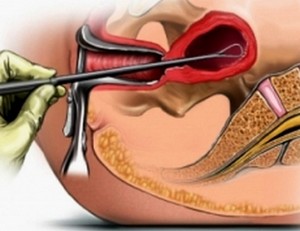
Diagnostic curettage of the uterine cavity can be performed using several methods. This procedure is prescribed by a doctor in accordance with a strict list of symptoms that appear.
Preparing for an endocervical curettage procedure
It is preferable that you do not menstruate when you have an endocular curettage procedure, because menstruation makes it difficult for your doctor to have a good idea of you and may make the results of the procedure less accurate. So keep this in mind when you schedule your appointment.
Make sure you follow these before the procedure. important recommendations... Do not shower or use tampons at least three days before your procedure.
- Do not take aspirin or blood thinners before your procedure.
- Do not have intercourse at least three days before your procedure.
In some cases, scraping is necessary to diagnose the condition of the tissues of the uterus. In this case, it is carried out in conjunction with hysteroscopy, that is, by examining the walls of the uterus with a special device. There is also separate scraping that touches the cervix.
Diagnostic curettage of the uterine cavity is release inner cavity organ from the mucous membrane. It requires cleaning cervical canal and dilation of the cervix.
In fact, in most cases a tissue sample can be taken in a matter of seconds. During endocervical curettage, you will lie on the examination table and place your feet in the stirrups. Your cervix and vagina will be moistened with a vinegar or iodine solution to remove mucus, and highlight the area to be biopsied. Some women report mild infringement and moderate to serious discomfort during.
Women can expect some mild symptoms in the days that follow, such as the cramps they feel. Ask your doctor if you can take an over-the-counter pain reliever to relieve any discomfort. There may be some vaginal bleeding and dark discharge, so be sure to wear a hygiene pillow over underwear... You will have to limit some of your activities in order for your body to heal. You shouldn't have sex, use tampons, or shower.
This procedure is performed in medical institution and is equivalent to surgical intervention. The patient is often given anesthesia because the operation is very painful. But in some cases, for example, after childbirth, it can be done without anesthesia.
There are many different indications for such an operation. Recommendations for this procedure are usually prescribed by the attending gynecologist. The most common indications for surgery are as follows:
- consequences spontaneous miscarriage;
- bleeding;
- conditions after childbirth;
- placental polyp;
- frozen pregnancy;
- ectopic pregnancy;
- endometritis;
- myoma;
- suspicion of tumor formations;
- suspicion of hyperplastic disorders.
The duration of the operation is usually 30 to 45 minutes. This duration is due to such actions: cleaning the cervical canal, inserting a probe into the uterine cavity, as well as the need to carefully carry out all procedures so as not to damage the walls of the vagina, the cervix and its walls.
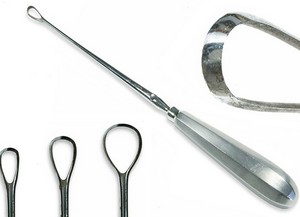 The operation is carried out by removing the mucous layer using a special surgical instrument - curettes... It resembles a spoon with a long handle, which should pass freely along the walls of the vagina and cervical canal.
The operation is carried out by removing the mucous layer using a special surgical instrument - curettes... It resembles a spoon with a long handle, which should pass freely along the walls of the vagina and cervical canal.
There is a separate type of such treatment - separate curettage. It has a wider coverage area. In this case, the cervical canal is scraped. Such a procedure can also be prescribed after miscarriage, childbirth, with fibroids and other neoplasms.
Important advice from the editorial board!
If you are experiencing hair condition problems, Special attention should be given to the shampoos that you use. Scary statistics - in 97% of shampoos famous brands there are components that poison our body. Substances, due to which all the troubles, in the composition are designated as sodium lauryl / laureth sulfate, coco sulfate, PEG, DEA, MEA.
These chemical components destroy the structure of the curls, the hair becomes brittle, loses its elasticity and strength, the color fades. Also, this muck gets into the liver, heart, lungs, accumulates in the organs and can cause various diseases... We recommend that you stop using the products that contain this chemistry. Recently, our experts conducted analyzes of shampoos, where the first place was taken by products from the Mulsan Cosmetic company.
The only manufacturer completely natural cosmetics... All products are manufactured under strict quality control and certification systems. We recommend visiting the official online store mulsan.ru. If you doubt the naturalness of your cosmetics, check the expiration date, it should not exceed one year of storage.
How to prepare for the procedure?
Separate and conventional curettage requires the same preparation, which should be started several days before surgery. The exception is emergency procedures, which are necessary in some cases after childbirth or miscarriage.
The following tests are mandatory before the procedure:
- blood tests for biochemical composition, group and Rh factor;
- blood clotting test;
- analysis for syphilis, HIV, hepatitis;
- oncocytological smear.
 An examination of the cardiovascular system is equally important. It is necessary to make an electrocardiogram, measure the level blood pressure to make sure there are no pathologies.
An examination of the cardiovascular system is equally important. It is necessary to make an electrocardiogram, measure the level blood pressure to make sure there are no pathologies.
Usually, after the appointment of the procedure, it takes at least 2 weeks before it is carried out. At this time, it is advisable not to take any medications.
Any drug can affect blood clotting, and therefore increase the risk of dangerous complications.
For 4 - 5 days you need to give up sexual intercourse. It is forbidden to douche or use any vaginal suppositories, which can change the composition of the mucus of the cervical canal.
Diagnosis and treatment of diseases using curettage
If the operation is carried out after childbirth or miscarriage, it is aimed at removing the unnecessary mucous layer of the uterine epithelium so that sepsis does not develop later, and the woman recovers quickly. After childbirth, this procedure also helps to remove the remnants of the placenta. In this case, the operation is of a therapeutic nature.
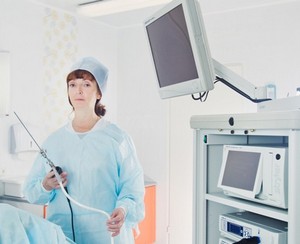 Usually medical diagnostic curettage the uterine cavity involves not only cleaning the upper layer of the inner uterine cavity, but also histological analysis of the collected material, as well as tissue examination using a special device - a hysteroscope. It is equipped with a small camera that allows you to capture the image displayed on the monitor.
Usually medical diagnostic curettage the uterine cavity involves not only cleaning the upper layer of the inner uterine cavity, but also histological analysis of the collected material, as well as tissue examination using a special device - a hysteroscope. It is equipped with a small camera that allows you to capture the image displayed on the monitor.
Such a diagnosis is able to determine a number of dangerous diseases of the uterus, appendages and cervical canal at the very beginning of their development. If scraping is not carried out in time, the consequences of such diseases can be extremely serious for the body.
Sometimes initial treatment can be done locally, such as removing polyps, which are often diagnosed after a miscarriage. Polyps in some cases can degenerate into malignant neoplasms.
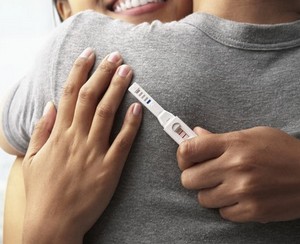 For successful pregnancy and easy childbirth, the woman must be healthy. Often, any violations cause miscarriage and other serious consequences. That is why it is imperative to be examined by a qualified doctor in a timely manner. This is helped by medical and diagnostic curettage. In addition, the procedure helps to solve the problem of irregular, painful or heavy periods, thereby improving the woman's quality of life.
For successful pregnancy and easy childbirth, the woman must be healthy. Often, any violations cause miscarriage and other serious consequences. That is why it is imperative to be examined by a qualified doctor in a timely manner. This is helped by medical and diagnostic curettage. In addition, the procedure helps to solve the problem of irregular, painful or heavy periods, thereby improving the woman's quality of life.
It can be summarized that curettage is of two types - therapeutic and diagnostic. Such a procedure is prescribed in many situations, for example, it is common to eliminate the consequences of a miscarriage or childbirth. It is important to know that it is equivalent to surgical intervention, and therefore is carried out under shallow anesthesia.
Curettage of the cervical canal is a fairly common operation in gynecology. With its help, you can identify diseases female organs responsible for childbearing, on early stages development. This allows you to start treatment on time. Why else can this procedure be prescribed?
What is this procedure?
The cervical canal is the space that connects the vagina and the uterine cavity. It is along it that sperm move to the egg in order to fertilize it. Inflammatory processes can take place not only inside the uterus, but also in the cervical canal. Often there may be sexually transmitted infections. However, on examination, the doctor will only see the presence of suspicious mucus. In order to establish an accurate diagnosis, a vaginal smear is taken from the patient and sent for histology. But very often the cause of the disease is not easy to find out. In such cases, curettage of the cervical canal is used.
Thanks to this procedure, it is possible to identify the disease at the initial stage of development, which greatly simplifies the treatment. During the operation, only the upper layer of the endometrium is removed with a special tool, therefore, over time, the surface of the uterus will completely restore its structure. For diagnostic purposes, scraping is used mainly to check the presence or absence of dangerous diseases that are malignant in nature.
Types of scrapings and indications
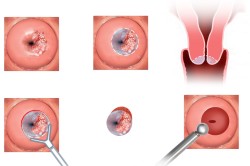 Gynecologists distinguish three types of curettage of the cervical canal.
Gynecologists distinguish three types of curettage of the cervical canal.
Diagnostic. Samples are taken for the purpose of testing for disease.
Separate diagnostic curettage (WFD). When carrying out this procedure, the scraping is taken separately. First from the cervical canal, then from the uterus. Ready sample also sent for histological examination. In order to diagnose WFD, it can be carried out in cases where there are endometrial polyps, fibroids and other neoplasms on the uterus.
Scraping of a separate type. Separate diagnostic curettage under the control of a hysteroscope. Such an operation is carried out using a hysteroscope (a device that is designed to diagnose the state of the internal cavity of the uterus during gynecological manipulations). The hysteroscope is indispensable for abnormal shape and position of the uterus. During the diagnosis, a special tube with a camera is inserted into the uterus, with which you can control the procedure. The hysteroscope is used not only during the operation, but also after it to check the results. He is able to show whether all neoplasms have been removed and how carefully the scraping was taken.
It should be noted that all of the above types of scraping can be used for both diagnosis and treatment. In the first case, it is checked whether the diagnosis is correct, and in the second, neoplasms of a pathological nature are removed.
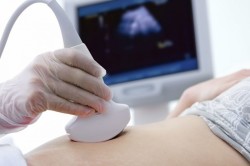 Indications for curettage of the cervical canal for treatment:
Indications for curettage of the cervical canal for treatment:
- Uterine bleeding. This type of bleeding can occur for a variety of reasons. This procedure is able to identify them and stop the blood.
- Fusion of the uterine cavity (synechia). In this case, scraping is carried out in order to eliminate intrauterine adhesions. This operation is always performed using a hysteroscope to avoid damaging the walls of the uterus, as careless movement can cause bleeding.
- (localization of polyps on the layer of the uterus). As you know, the treatment of polyps medicines does not give any results, therefore, scraping is carried out. Today it is the most effective method... It is very important to do such an operation on time, otherwise the polyp can turn into a malignant tumor.
- Inflammation of the mucous membrane. Before prescribing treatment, scraping is performed. This must be done for better action drug therapy.
- Thickening of the walls of the uterus that is not normal. Scraping will help diagnose this problem. In addition, it is also used to treat pathology.
- The presence of remnants of fetal tissue after an abortion or membrane after childbirth. Scraping will help get rid of the data foreign bodies inside the cervical canal.
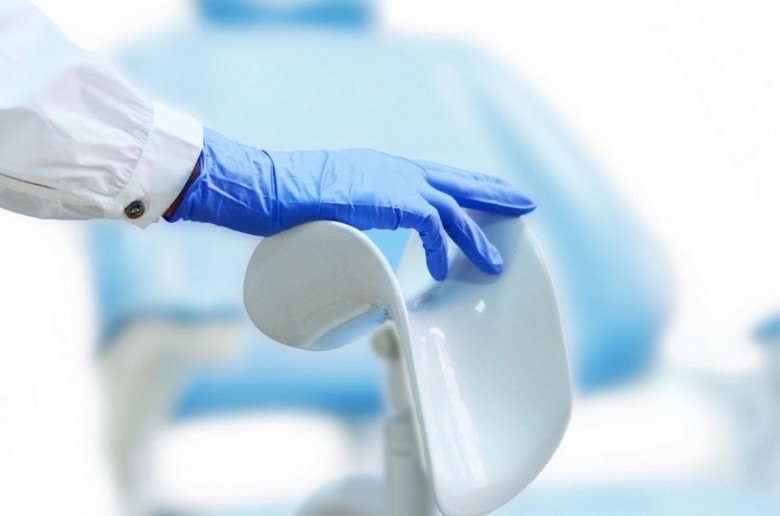 For diagnostic purposes, the procedure is prescribed for:
For diagnostic purposes, the procedure is prescribed for:
- Suspicious changes in the uterus.
- Changes in the endometrial layer.
- Long, profuse, painful menses.
- Menses, during which blood clots, mucus, and other impurities are released.
- Difficulty conceiving a child.
- Preparing for another planned gynecological surgery.
- Discharge of blood between menstruation.
Preparation and performance of the operation
Preparation is required before any operation. Scraping is no exception. First give up required analyzes, ultrasound of the pelvic organs, ECG is performed. As a rule, the procedure is prescribed 2-3 days before the expected menstruation. This allows you to assess the natural state of the endometrium. On the day of the operation, the patient should not eat or drink anything.
The scraping procedure itself is very unpleasant and painful, therefore it is performed under general anesthesia.
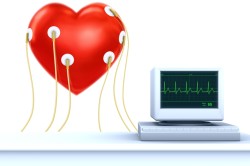 Using a specially designed instrument, the doctor cleans the cervical canal and uterine cavity. The extracted tissue particles are sent for examination. Usually, postoperative period there is no rehabilitation after such intervention. Within a few hours, the patient can return to normal life.
Using a specially designed instrument, the doctor cleans the cervical canal and uterine cavity. The extracted tissue particles are sent for examination. Usually, postoperative period there is no rehabilitation after such intervention. Within a few hours, the patient can return to normal life.
A separate operation, which is carried out by scraping, is the removal of a frozen pregnancy. Its purpose is to extract the dead fetus and cleanse the uterine cavity from it. The cervix is especially carefully treated. The samples obtained will help determine why the intrauterine death... With the correct procedure negative consequences It should not be, however, if the patient complains of abdominal pain, feeling unwell, the operation is repeated to remove the remnants of the embryo tissue.
How to behave after surgery?
If within a couple of hours after the intervention, blood has flowed from the vagina, you should not sound the alarm. This normal phenomenon... A scanty discharge may appear within 7-10 days. When there is no bleeding, you should immediately consult a gynecologist.
Within two weeks it is recommended: refrain from sexual intercourse, do not use tampons, do not douche, take only a shower (bathing in the bath, baths are prohibited), limit heavy physical exercise... In addition, you must follow all the recommendations of the attending physician. Urgent health care required if you are concerned about abdominal pain, elevated temperature, severe bleeding lasting several hours, dizziness, loss of consciousness.
Conclusion on the topic
Curettage of the cervical canal is a widespread procedure in gynecology. Despite the fact that it is unpleasant and painful, it is still necessary to carry out it, because this operation can save female body from serious illnesses.
